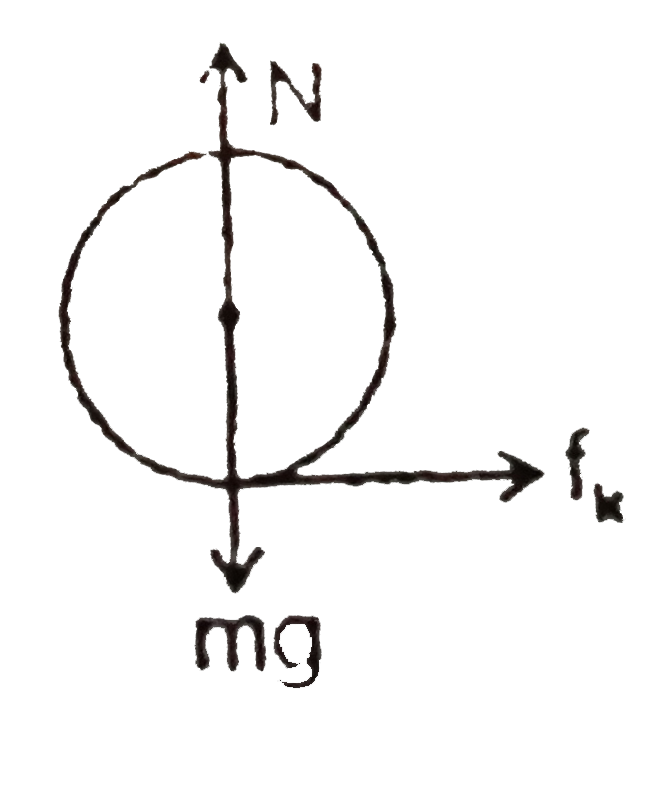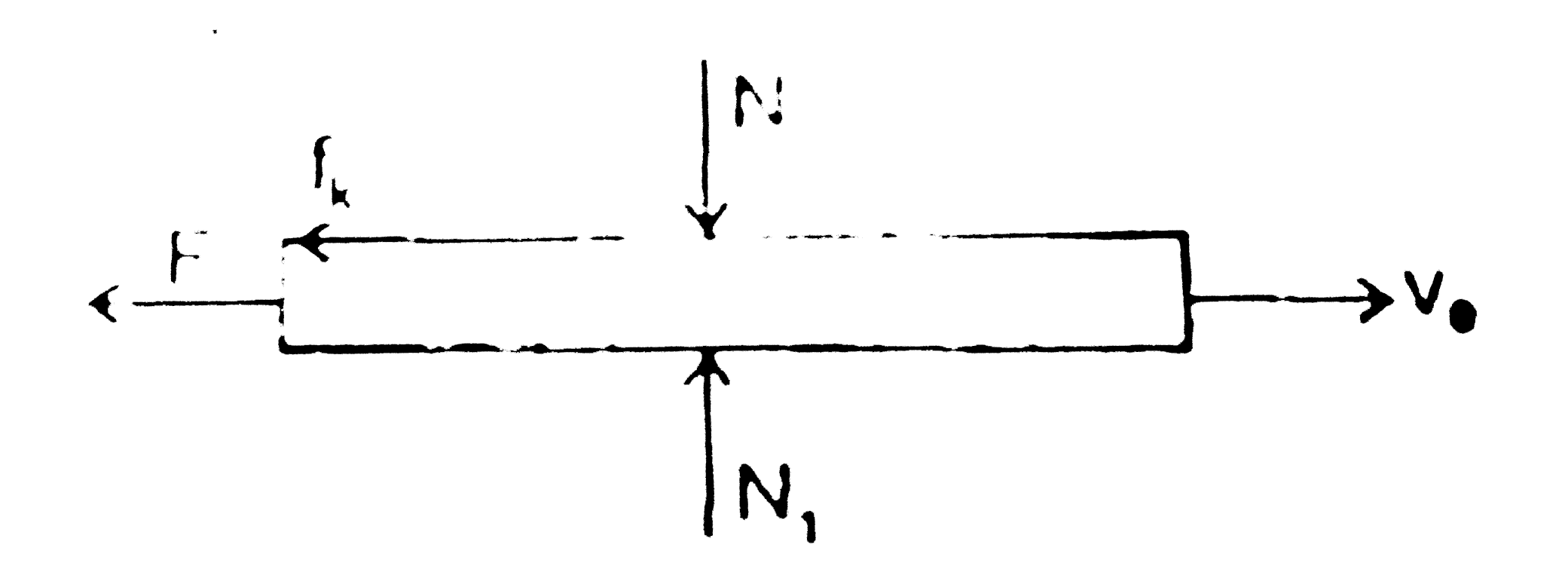On a rough horizontal x-y plane a body starts moving from origin with initial velocity (V0)ˆi. A constant force (F0)ˆj is always acting on the body. Kinetic friction on the body has magnitude F0. Find the magnitude (in m/s) of velocity of the particle when its direction makes an angle of 60∘ from y-axis. V0=12m/s, F0 = 10N, mass of body = 1kg.
The correct Answer is:1

Till rolling starts kinetic friction acts on the bodies.
F.B.D. of sphere fro no vertical acceleration N = mg
⇒fk=μmg(as fk=μN)
⇒a=μg
v=μgt
Also α=μmgrI⇒ω=μmgtI
The velocity of the lower most point of the sphere at time t is
vs=v+ωr
vs=μgt+μmgr2It
The F.B.D. of the plank
⇒ap=−(F+fkM)=−(F+μmgM)
vp=v0−(F+μmgM)t
VS=VP⇒t=v0[72μg+(F+μmgM)]

Topper's Solved these Questions
Similar Questions
A body of mass 5kg starts from the origin with an initial velocity of ¯¯¯U=(30i+40j)m/s. A constant force of F=(−ˆi−5ˆj)N acts on the body . Find the time in which they- component of the velocity becomes zero .
View SolutionA body of mass 5 kg statrs from the origin with an initial velocity →u=(30ˆi+40ˆj)ms−1. If a constant force (−6ˆi−5ˆj)N acts on the body, the time in which the y component of the velocity becomes zero is
View Solution
Knowledge Check
A body of mass 5 kg statrs from the origin with an initial velocity →u=(30ˆi+40ˆj)ms−1. If a constant force (−6ˆi−5ˆj)N acts on the body, the time in which they component of the velocity becomes zero is
A5sB20sC40sD80sStarting from origin at t=0, with initial velocity 5ˆjm/s, a particle moves in the x−y plane with a constant acceleration of (10ˆi−5ˆj)m/s2. Find the coordinates of the particle at the moment its y-coordinate is maximum.
A(5m, 5m)B(2.5m, 2.5m)C(5m, 2.5m)D(2.5m, 5m)A particle of mass 2kg moves with an initial velocity of (4ˆi+2ˆj)ms−1 on the x-y plane. A force →F=(2ˆi−8ˆj)N acts on the particle. The initial position of the particle is (2m,3m). Then for y=3m,
APossible value of x is only x=2mBPossible value of x is not only x=2m, but there exists some other value of x alsoCTime taken is 2sDAll of the above
Starting from origin at t=0, with initial velocity 5ˆjm/s, a particle moves in the x−y plane with a constant acceleration of (10ˆi−5ˆj)m/s2. Find the coordinates of the particle at the moment its y-coordinate is maximum.
View SolutionA force F = (4.0xˆi+3.0yˆj) N acts on a particle which moves in the x-direction from the origin to x = 5.0 m. Find the work done on the object by the force.
View SolutionA particle leaves the origin with initial velocity →v0=11ˆi+14ˆjm/s. It undergoes a constant acceleration given by →a=−225ˆi+215ˆjm/s2.
When does the particle cross the y-axis ?
View SolutionA constant force acts on a body of mass 0.9 kg at rest for 10 s . If the body moves a distance of 250 m, the magnitude of the force is
View SolutionA particle leaves the origin with initial velocity →v0=11ˆi+14ˆjm/s. It undergoes a constant acceleration given by →a=−225ˆi+215ˆjm/s2.
When does the particle cross the y-axis ?
View Solution
